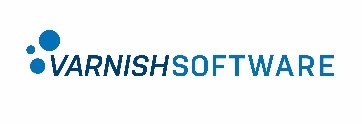
-
StatusOngoing
-
Status date2025-04-09
-
Activity Code3F.005
5G-EMERGE is a digital transformation project, converging satellite services with online delivery, making use of the 3GPP 5G specification as convergence technology.
The project envisages to develop an open multi-tenant ecosystem that seamlessly integrates Near Edges well connected to Satellite Teleport with distributed Far Edges through a virtualised satellite connection to 5G- base stations. This solution is a hybrid, native IP, infrastructure based on open standards to deploy edges in both 5G and non 5G-network head-ends, home networks and networks in vehicles. The edge architecture can host applications and expose popular content transparently to end-users, with caching and satellite backhaul as core service.
The objective is to design this open ecosystem, identify the maturity of essential solutions, investigate market viability and validate performance through real world testbeds.
Key challenges relate to the design of an ecosystem that allows (competing) service providers to cooperate in a distributed edge network with satellite backhaul.
There is a lack of defined (5G compliant) interfaces essential to connect functional components to guarantee end-to-end functioning of this multi-tenant setup. This includes the design of a service provisioning layer to control operation and enable to use the system with distributed edges as a single network.
Another challenge concerns the optimization of content provisioning to the distributed edges. And there is the question of transparent service discovery that will allow standards playout application to retrieve content from nearby 5G-EMERGE edges.
5GEMERGE aims at converging satellite distribution with online media delivery, leveraging satellite’s unique capability of distributing popular content in a cost-efficient manner over a large region with operationally superior quality that avoids congested interconnection hubs.
End users will be able to enjoy superior streaming applications providing live and on demand offerings from multiple Content Providers using normal applications on their own internet connected devices.
A Native IP solution allows different satellite networks to be used and pre-fetching mechanisms select popular content for specific edge locations, maximising efficiency of satellite backhaul capacity.
This is thanks to the 5G-EMERGE distributed edges that can be deployed in cars, trains, ships, planes, homes, apartment buildings, hotels, network head ends or at the access of 4G and 5G networks.
The baseline service layout of the 5GEMERGE ecosystem considers different actors and data streams. The satellite teleport will receive from a content provider the most popular live and on demand content that is intended for the specific region covered by the satellites connected to the uplink.
Satellites will distribute this content to home gateways, or edges in vehicles in vehicles and 4G/5G base stations through which it will be delivered to the end-user. In this manner, end-user playout devices controlled by content providers’/aggregators’ applications can access relevant content in the local network and make use of 5G edge processing capabilities.

The architecture follows the layout of different components in system function classes (SF) as per illustration.

5G-EMERGE consists of 2 project phases of 2 years each. Phase I has run from Q4-2022 to Q4-2024 and Phase II runs until Q4-2026.
Phase I was organised in 5 work packages that delivered in 4 milestones with half year intervals:
-
WP1: Full system study including collecting relevant use case scenarios and traceable requirements. An architecture is drafted and complemented with a maturity assessment for available hardware and software.
-
WP2: Definition of ecosystem from an architectural and interface perspective. Critical technology elements are analysed, and testing/validation activities scoped.
-
WP3: A market assessment of a minimal viable product and potential value-added services is made. This combined with a value chain and cost analyses results in an industrialisation strategy for the ecosystem.
-
WP4: Agile process with development cycles to create a baseline stack of the envisaged ecosystem. This baseline stack is used to demonstrate, test and validate the ecosystem from an end-to-end perspective for 3 main use-case classes Direct to Home, Direct to Vehicle and Direct to Edge.
-
WP5: Dissemination activity responsible for delivering public available descriptions of the ecosystem.
Phase II:
Consists of productization and industrialisation activities with specific developments adding the Direct-to-Device use case to the targeting industry segments of Phase I: Direct-to-Home; Direct-to-Edge; Direct-to-Vehicle.
Phase II comprises 6 work strands that deliver in 3 milestones (in addition, 3 mid-term meetings are also organized to focus on technical issues):
-
Strand 1 ‘Management, Architecture and Dissemination’ covers project overarching activities from coordination to dissemination and standardization. Strand 1 also updates the generic documentation (public and internal) with the goal to detail architecture and interface descriptions further with results of new test-bed experiments, and to share this with industry as part of the adaptation strategy and liaisons with standardisation bodies.
-
Strand 2 ‘Common edge network functionalities’ concentrates on software applications deployed onto, and consumed at, the edges – from service creation, management, orchestration, discovery, consumption by end users, alongside telemetry, security and reporting. All these new and existing 5G-EMERGE functionalities and capabilities are tested in the end-to-end integrated testbeds of strands 3 to 6.
-
Strand 3 ‘Direct-to-Home’ builds on the DTH specific developments and testbeds. It includes a nomadic setup with a new foldable antenna developed in the project to enable coverage in remote areas.
-
Strand 4 ‘Direct-to-Vehicle’ includes two DTV testbeds, one concentrating on a car antenna and one aiming at developing an antenna for buses. Both antennas are optimized for use in Phase 2 with the goal to provide the market with lower costs antenna solutions to improve the uptake viability of the 5G-EMERGE ecosystem.
-
Strand 5 ‘Direct -to-Edge’ hosts the DTE or direct to node testbeds. These look at a firm integration with 5G access networks that are either fixed or on a ship.
-
Strand 6 ‘Direct-to-Device’ looks at the Direct-to-Device use cases in which end-users connect with their NR-enabled 5GMBS devices to satellites. This can be NR-NTN MBS enabled mobile phones or for example a NR-NTN MBS enabled MiFi router. The objective of the work is to investigate how NR-NTN MBS could be integrated in 5G-EMERGE alongside other networks.
Phase I has been completed. It started with defining use case scenarios, taking stock of essential system requirements, and then drawing of the technical architecture whilst specifying the interfaces. Potential service segments were assessed from the viewpoint of the delivery of audiovisual media services and within each of them there are a number of specific use cases.
Three testbeds were set up using existing off-the-shelf solutions addressing the 3 identified different use case classes. In Geneva (EBU) and Luxembourg (SES) Direct-to-Home scenarios are deployed, in Luleå (Artic Space) a Direct-to-Edge testbed was developed and in Oslo (Telenor) a satellite enhanced edge delivers content to a 5G base station in a testbed for deployment on ships as part of a Direct-to-Vehicle use case.
Phase II started in November 2024 with Strand leaders organising the work in smaller projects, the Work Packages. The Work Packages deliver Technical Notes which are updated every Milestone with progress reports and inputs for the documentation set governed by Strand 1 (providing progress reports, impact on research documentation, liaison and dissemination activities).
The first Mid-Term review is planned in February 2025 and the first Milestone meeting in June 2025.




































